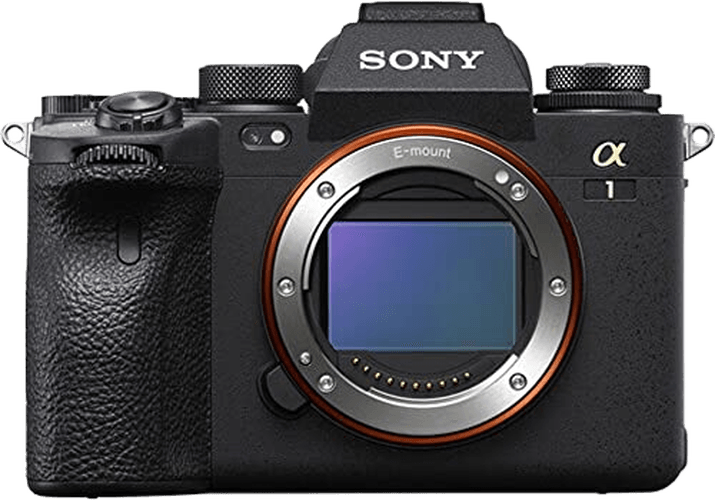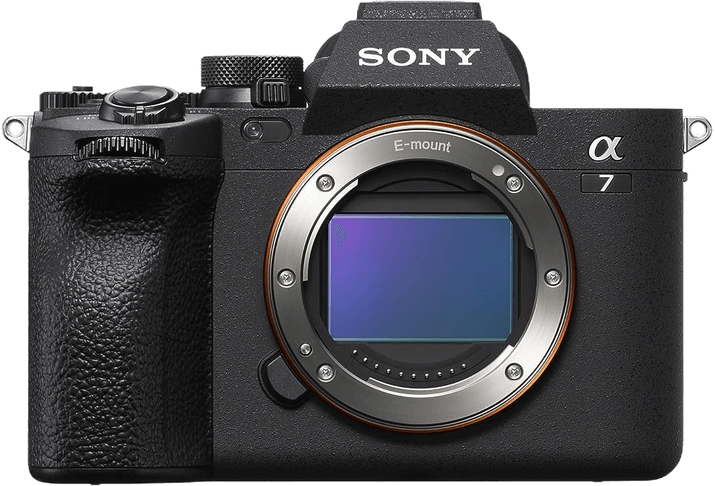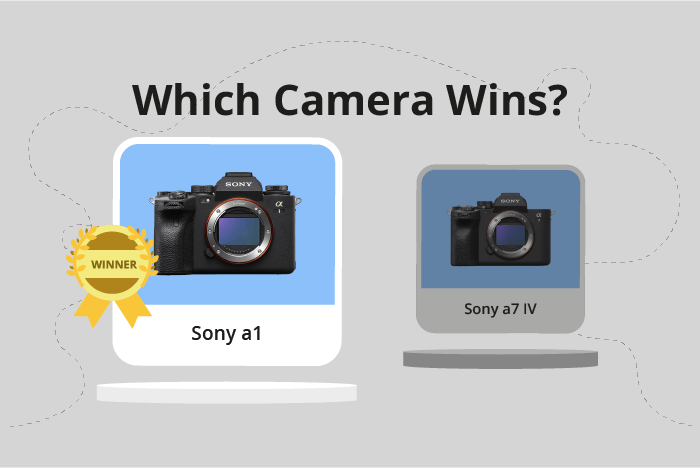Sony a1 vs a7 IV Comparison
Sony a1

Sony a7 IV

The Sony a1 outperforms the Sony a7 IV with a score of 86/100 compared to 84/100. Both cameras are mirrorless and were released in 2021. They share similar dimensions, with the a1 measuring 129 x 97 x 81mm and the a7 IV at 131 x 96 x 80mm. The a1 is slightly heavier at 737g, while the a7 IV weighs 659g.
The a1’s higher score indicates its superior performance. Its launch price of $6499 reflects its advanced features and capabilities. On the other hand, the a7 IV is more affordable at $2499, making it a better option for budget-conscious consumers.
While the a1 offers top-notch performance, the a7 IV is a more budget-friendly option without sacrificing quality. Both cameras provide excellent results, but the a1’s higher score shows that it has an edge in performance.
Sony a1 vs a7 IV Overview and Optics
The Sony a1 outperforms the Sony a7 IV in optics with a score of 89/100, compared to 85/100 for the a7 IV. Both cameras share several specifications, including a CMOS sensor, full-frame sensor size, Sony FE lens mount, and image stabilization.
The Sony a1 excels with its 50.1-megapixel resolution, providing greater detail and image quality than the a7 IV’s 33 megapixels. Additionally, the a1 boasts a faster shooting speed of 30 frames per second (fps), compared to the a7 IV’s 10 fps. This allows for better capturing of fast-moving subjects and action shots. The a1 also benefits from a dual Bionz XR processor, enhancing its overall performance and processing speed. Furthermore, the a1’s sensor has a higher DXOMARK score of 98, indicating superior image quality.
On the other hand, the Sony a7 IV still offers solid performance in optics, despite its lower score. Its 33-megapixel resolution is sufficient for most photography needs, and its 10 fps shooting speed is adequate for general use. The a7 IV also features a Bionz XR processor, ensuring reliable performance and processing capabilities. Its sensor has a DXOMARK score of 97, which is only slightly lower than the a1’s score, indicating that the a7 IV still delivers high-quality images.
Comparing the two cameras, the Sony a1 is the clear winner in optics due to its higher resolution, faster shooting speed, and superior sensor performance. However, the Sony a7 IV remains a strong contender, offering reliable performance and image quality for most photographers.
Sony a1 vs a7 IV Video Performance
The Sony a7 IV outperforms the Sony a1 in video capabilities, scoring 91/100 compared to the a1’s 86/100. Both cameras share some specifications, such as a maximum video frame rate of 120fps. This allows both models to capture smooth slow-motion footage at high-resolution settings.
The winning camera, the Sony a7 IV, has a built-in time-lapse functionality, which is a significant advantage for videographers. Time-lapse is an essential feature for those looking to create dynamic and visually stunning videos, making the a7 IV a more versatile option in terms of video capabilities.
However, the Sony a1 has a higher maximum video resolution of 8K (7680 x 4320), compared to the a7 IV’s 4K (3840 x 2160) resolution. This means the a1 can capture more detailed footage, which is beneficial for professional videographers who require superior image quality for their work. Despite this advantage, the a1’s higher resolution does not outweigh the a7 IV’s overall video performance and features.
While the Sony a1 has a higher maximum video resolution, the Sony a7 IV’s built-in time-lapse functionality and higher video score make it the better choice for videographers. The a7 IV offers more flexibility and creative options for users, ensuring it stands out as the superior option for video capabilities. The a1, on the other hand, is more suitable for those who prioritize video resolution above all else. Therefore, the Sony a7 IV is the recommended choice for videographers seeking the best video performance in these two models.
Sony a1 vs a7 IV Features and Benefits
The Sony a1 and the Sony a7 IV both have a feature score of 83/100, making them evenly matched in this aspect. They share several common specifications, such as a 3-inch screen size, touchscreen capabilities, a flip screen, no GPS, and both have WIFI and Bluetooth connectivity.
The Sony a1 stands out with a higher screen resolution of 1,440,000 dots compared to the Sony a7 IV’s 1,040,000 dots. This difference provides the Sony a1 with a sharper and more detailed display, which is beneficial for reviewing images and navigating menus.
On the other hand, the Sony a7 IV does not have any features that are better than the Sony a1, as their feature scores are identical and the only difference in specifications is the lower screen resolution. However, this does not mean that the Sony a7 IV is a worse camera, as it still offers a high-quality display and a range of useful features that are on par with the Sony a1.
Considering these factors, both cameras are strong contenders in terms of features. The Sony a1 has a slight advantage due to its higher screen resolution, but the Sony a7 IV remains a reliable option with its similar specifications. Ultimately, the choice between these two cameras will depend on individual preferences and priorities, as they both offer a robust set of features for photographers and videographers alike.
Sony a1 vs a7 IV Storage and Battery
The Sony a7 IV outperforms the Sony a1 in storage and battery with a score of 76/100 compared to the Sony a1’s 73/100. Both cameras share common specifications, including two memory card slots, compatibility with SD and CFexpress Type A (UHS-II) cards, the NP-FZ100 battery type, and USB charging capability.
The Sony a7 IV’s advantage lies in its longer battery life of 580 shots, which surpasses the Sony a1’s 530 shots. This difference allows the Sony a7 IV users to capture more images without needing to recharge or replace the battery.
On the other hand, the Sony a1 does not have any distinct advantages in storage and battery over the Sony a7 IV. Both cameras offer similar storage capabilities, making them equally suitable for various photography and videography needs.
Considering the storage and battery aspects, the Sony a7 IV has a slight edge over the Sony a1, primarily due to its extended battery life. This advantage may benefit photographers who require longer shooting sessions without frequent battery replacements or recharging.
Alternatives to the Sony a1 and a7 IV
Are you still undecided about which camera is right for you? Have a look at these popular comparisons that feature the Sony a1 or the Sony a7 IV:

